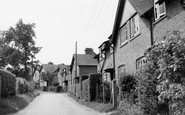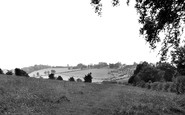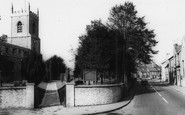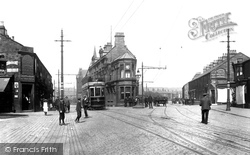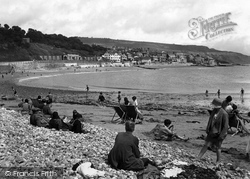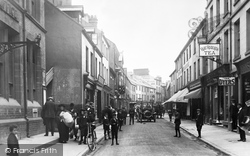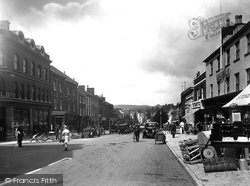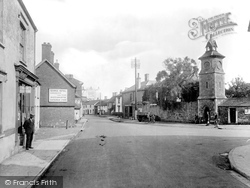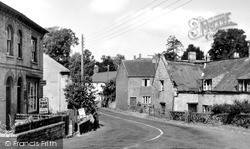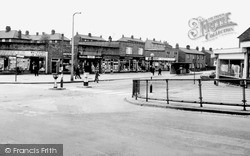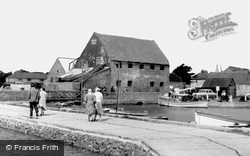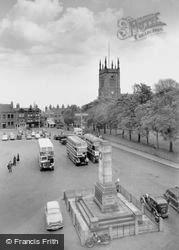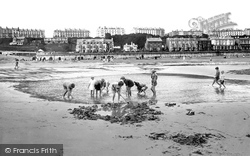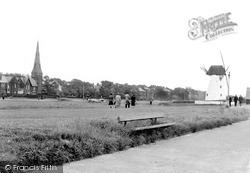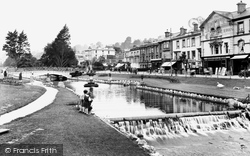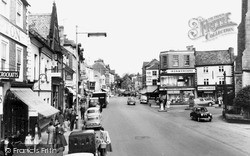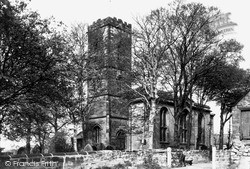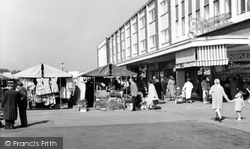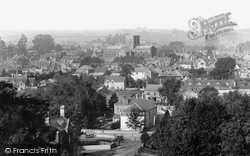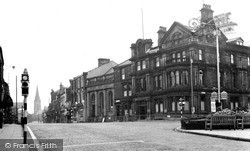Places
26 places found.
Those places high-lighted have photos. All locations may have maps, books and memories.
- Town End, Derbyshire
- Town End, Buckinghamshire
- Town's End, Somerset
- Towns End, Dorset
- Town End, Merseyside
- Town End, Cambridgeshire
- Town's End, Buckinghamshire
- West End Town, Northumberland
- Bolton Town End, Lancashire
- Kearby Town End, Yorkshire
- Town End, Cumbria (near Grange-Over-Sands)
- Town End, Cumbria (near Bowness-On-Windermere)
- Town End, Yorkshire (near Huddersfield)
- Town End, Yorkshire (near Wilberfoss)
- Town End, Cumbria (near Appleby-in-Westmorland)
- Town's End, Dorset (near Melbury Osmond)
- Town's End, Dorset (near Swanage)
- Town End, Cumbria (near Ambleside)
- Town End, Cumbria (near Lakeside)
- Town End, Cumbria (near Kirkby Lonsdale)
- Town End, Cumbria (near Ambleside)
- Town's End, Dorset (near Bere Regis)
- West-end Town, South Glamorgan
- Townend, Derbyshire
- Townend, Strathclyde (near Dumbarton)
- Townend, Staffordshire (near Stone)
Photos
26 photos found. Showing results 1,961 to 26.
Maps
195 maps found.
Books
160 books found. Showing results 2,353 to 2,376.
Memories
3,719 memories found. Showing results 981 to 990.
Happy Days
My father was in the Army stationed a Bulford in the Command Supply Depot. We lived in one of the houses in a complex called The Albany now (Aldi). I attended the C of E school at Hampshire Cross and later Tidworth Down school. I ...Read more
A memory of North Tidworth in 1962 by
Old Charactors & Childhood Memories
I grew up in Stenalees in the 1960s and 1970s, my sister and I have so many fond childhood memories - Dick Richards shop, the smell of the paraffin heater in the winter and buying Spangles. Old Toby Tucker who ...Read more
A memory of Stenalees by
Walking Home From School
I remember walking to Brierley Hill Grammar school and back home to Pensnett most days, sometimes alone, sometimes with friends. We walked up Mill Street then down the High Street, with Chattin and Hortons, Woolworths to ...Read more
A memory of Pensnett in 1952 by
Alexandra Road
Born in 60 Alexandra Road in 1943, I went to Crescent Road [Headmistress Mrs Keeble], later to Northumberland Heath School. Walked right down Manor Road just last week round Crescent Road sad to see the school has gone. Such memories ...Read more
A memory of Erith in 1950 by
Invicta Cycles
Invicta Cycles was the bike shop in the village and at the front/right of this photo - where the White/Ford/Zodiac car is. I put a deposit down on a Lilac/Pink Raleigh bike and paid some off each week from my paper round ...Read more
A memory of Byfleet by
Church Farm Caravan Site 1975 1979
I have just booked a holiday to Church Farm Caravan Site for May 2011 and the reason for this is I used to holiday there every year from 1975 to 1979. My parents had a caravan on the Saltings I think it was ...Read more
A memory of Pagham in 1975 by
Another Coulsdon Playground
I lived in Tollers Lane, Old Coulsdon 1946-59 before moving to Coulsdon Rise. Farthing Downs was one of our favourite play spaces. Walking down the rough lane opposite our house to Tollers Farm, on down into Happy ...Read more
A memory of Coulsdon in 1952 by
Bruce St.
I remember moving from Caldercruix to the new scheme and it was great to have a bath in the house!!! They hadn't laid paths or put up fences but everyone was so pleased to get a new house it didn't matter. They started building more houses ...Read more
A memory of Plains in 1955
Nicester International Stores
My first job was at Bicester International Stores in August 1966. I was an apprentice grocer. My wages five pound ten shillings a week and I worked an extra half a day most weeks for thirty-seven and a half pence ...Read more
A memory of Bicester in 1966 by
Birchington, Epple Bay And Minnis Bay
Birchington with two bays and a village atmosphere 'in town'. A rail station with the most wonderful ice cream parlour opposite - wicker chairs on those old fashioned curved steel bases and circular wicker ...Read more
A memory of Birchington in 1955 by
Captions
5,111 captions found. Showing results 2,353 to 2,376.
Burnley was one of the few towns where steam trams were employed after the horse buses and before the electric trams that the corporation introduced in the early 1900s.
Land for an ornamental park and recreation ground, an area of some 30 acres in North Ormesby, was given to the town by Councillor and Mrs J G Pallister.
Happy Valley was described as one of the best public parks or 'leisure grounds' in Britain, and was presented to the town by Lord Mostyn.
This photograph shows Marine Parade and its beach- tents, between Langmoor Gardens (top left) and the 1922-built Bay Private Hotel (centre).
Bangor's main street runs between the station and the harbour, and today is partly pedestrianised. It is shown here crowded with shoppers and an early car.
The Sands and Pier 1921 Southsea is not without its literary associ- ations.
Frost's shop front 1909 Mr Frost's printing works and shop would have been kept busy in a market town like Bridport, producing a local newspaper, bills of sale and stationery for farmers and
The village lock-up and a medieval market cross and bell tower once stood here at the junction.
The village lock-up and a medieval market cross and bell tower once stood here at the junction.
BBC and ITV aerials proliferate above the rooftops of Maltby.
The old tide mill overlooking the quay at Emsworth, once Chichester Harbour's main port and an important centre for the oyster trade.
called the North Gate) is still closed every evening, a practice that has continued since about 1340AD when the wall surrounding the cathedral was completed, thus emphasising that the cathedral and
The originally 14th-century pinnacled tower of St Mark's parish church watches over Ilkeston's wide Market Place, with the town's war memorial in the foreground.
The large, gracious, Victorian terraces serving as guesthouses and hotels dominate the skyline along the sea front. The building of the new town began in 1840, and by 1867 it was a bustling resort.
The photograph gives the impression that the town is waiting for someone or some-thing to lift it from gloom and despondency.
The Dawlish Water and its high tributary the Smallacombe Brook rise on the wooded heathland of Little Haldon Hill, which rises eight hundred feet at the back of the town.
After the 1850s the new railway from Churston meant that Brixham fish could be sent swiftly to towns and cities throughout Britain.
Gone are the market stalls and booths of an earlier era. Here are the vans and accoutrements of a modern thriving market town, utilising the fronts of the Georgian buildings.
BBC and ITV aerials proliferate above the rooftops of Maltby.
BBC and ITV aerials proliferate above the rooftops of Maltby.
The town centre was constructed on a plateau halfway between Laindon and Vange. The block of 41 shops facing Market Square was the first to be built.
Sherborne is, by some people's estimation, the most beautiful of the Dorset towns.
The small market town of Belford was once a coaching stop for travellers on the Great North Road.
We are looking down Manchester Road, the A56; the road looks quiet and almost asleep. The Lord Nelson Hotel is on the right.
Places (26)
Photos (26)
Memories (3719)
Books (160)
Maps (195)

